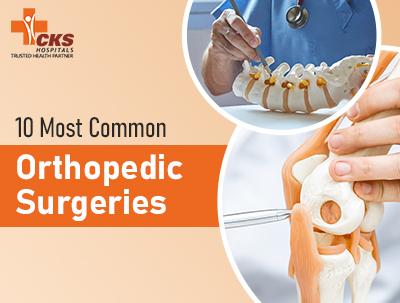When there is a disruption in the transmission of sound energy to the cochlea, the hearing organ in the inner ear, the person has conductive hearing loss. Ear canal obstruction, eardrum perforation, dysfunction of the tympanic membrane’s three supporting bones, and middle ear effusion are all common causes of this problem. Happily, this problem can indeed usually be helped.
When the outer and middle ears are unable to properly transmit sound to the inner ear, the sufferer has conductive hearing loss. It can affect either your left or right ear or both.
Learn more about what is conductive hearing loss, its symptoms, causes, and possible treatments, in this article.
Types of Conductive Hearing Loss
The causes of hearing loss are many and can affect anyone at any age. Sensorineural hearing loss, conductive hearing loss, and mixed sensitivity to sound are the three primary types of auditory dysfunction.
Sensorineural Hearing Loss
Inner ear injury or damage to the hearing nerve are the causes of this form of hearing loss. When the hair cells of the cochlea are destroyed, hearing loss is a common result.
Most cases of hearing impairment are due to sensorineural causes. It can develop because of being older, being in an extremely noisy environment, being injured, being sick, taking certain medications, or being genetically predisposed. Many patients with this form of hearing loss find that cochlear implants are helpful, even though medical and surgical treatment is usually not an option.
Conductive Hearing Loss
Sound waves are blocked before they can reach the inner ear, resulting in this form of hearing loss, which can occur in the middle or outer ear. Earwax or an object lodged in the inner ear can prevent sound from entering, while fluid, infection, or a bone anomaly in the middle ear can cause hearing loss, and a ruptured eardrum can also prevent sound from exiting the ear.
It is possible that medical or surgical treatment of conductive hearing loss can be successful in restoring normal hearing in some patients. Children who suffer from chronic ear infections or who put things into their ear canals frequently are at increased risk for developing this issue..
Mixed Hearing Loss
There are cases in which patients experience both conductive and sensorineural hearing loss. It’s possible that their sensorineural hearing loss will progress to include conductive issues.
The best hearing care solution can’t be determined without first identifying the specific type of hearing loss that you’re experiencing, and this can only be done through a thorough hearing test. Hearing aids come in a wide range of shapes, sizes, and technological advancements, and there are other options for those who prefer not to use them.
Causes of conductive hearing loss
Numerous factors contribute to conductive hearing loss. The good news is that many of these conditions are only transient and treatable. Those who suffer from this often struggle to understand speech at normal levels. As a result, you might crank up the volume on your TV, stereo, or headphones. When the inner ear is blocked from sound, the person experiences this problem. Both outer and middle ear problems can contribute to this symptom.
Some of the outer-ear issues that might lead to conductive hearing loss are
- Having anything, like a bug, lodged in your ear
- Blockage of the ear canal due to much earwax
- A tumor of bone that causes your ear to enlarge
- Cases of otitis externa, also known as “swimmer’s ear,”
- Problems with the ear canal’s typical anatomy
- A constriction of the ear canal
Some of the issues that might arise in the middle ear and lead to conductive hearing loss are:
- Problems with fluid accumulation and ear infections
- Your eardrum has been ruptured
- An injury to the eardrum
- Ear pain caused by intra-aural pressure.
- The development of a thicker eardrum
- The accumulation of extra skin cells inside the ear canal
- Otosclerosis is a genetic disorder that alters the shape of the middle ear bone.
Conductive hearing loss treatment
- If a hearing aid is recommended by your audiologist, Under conductive hearing loss treatment a technique called fitting will be used to fine-tune the device for your unique hearing loss. It’s important to remember that hearing aids do nothing to repair or restore hearing. A hearing aid’s primary function is to amplify sounds within the frequency ranges that the wearer finds most useful.
- Modern hearing aids are very adaptable, allowing you to magnify the noises you want to hear while filtering out the ones you don’t. While they don’t provide a perfect substitute for normal hearing, they are a great option for those with a slight to moderate loss of hearing. Pediatric hearing aids are designed with the unique needs of children in mind.
- In cases where the amplification provided by hearing aids is insufficient, cochlear implants may be suggested. Hearing implants are a good alternative for those whose hearing loss is not adequately addressed by hearing aids but who do not want to undergo surgery. It’s possible that everyone, from kids to adults to seniors, could benefit from a cochlear implant. In most cases, cochlear implants are covered by insurance, unlike hearing aids.
- Particularly if the issue is related to the bones or other anatomical structures, surgical intervention may be necessary. If this is not remedied by medical treatment or if it is a mixed sensorineural and conductive loss, a hearing healthcare expert will investigate additional possibilities, such as hearing aids or the surgical implantation of a bone-anchored sound device, which is functionally distinct from a cochlear implant.
When one experiences significant loss of hearing in one ear, it is imperative that one seek medical attention immediately. Rapid medical attention can lessen the likelihood of irreversible hearing loss if you have a sudden loss of hearing. If you are looking for a Hearing loss Treatment our CKS Hospital Is the Best ENT Hospital in Jaipur.
What is the most Common Cause of conductive Hearing loss?
Otitis media, otosclerosis, and cerumen impaction are the most likely reasons for conductive hearing loss. Sensorineural hearing loss is commonly brought on by exposure to loud noises, getting older, or a genetic predisposition to the condition. Also Caused by allergies or colds, fluid builds up in the middle ear.
What are Signs of Conductive Hearing Loss?
If the inner ear isn’t stimulated, the brain won’t receive any electrical impulses from the translated sound waves. Hearing loss can occur even when the inner ear is otherwise healthy. This is because the brain is unable to obtain information about the noises it is exposed to.
What is Conductive hearing Loss and What Causes it?
When the normal passage of sound through the outer ear or the middle ear is obstructed, resulting in diminished transmission of sound to the inner ear, this is known as conductive hearing loss. Possible causes is in the external ear structures include: The body typically produces some amount of earwax.
Can conductive hearing loss be treated?
True, conductive hearing loss is often treatable or even reversible. Hearing aids and conductive hearing loss surgery are the two most common methods of treating conductive hearing loss. Care from a doctor. Hearing aids, implants, and other hearing technologies including bone conduction devices are all examples of hearing instruments.







